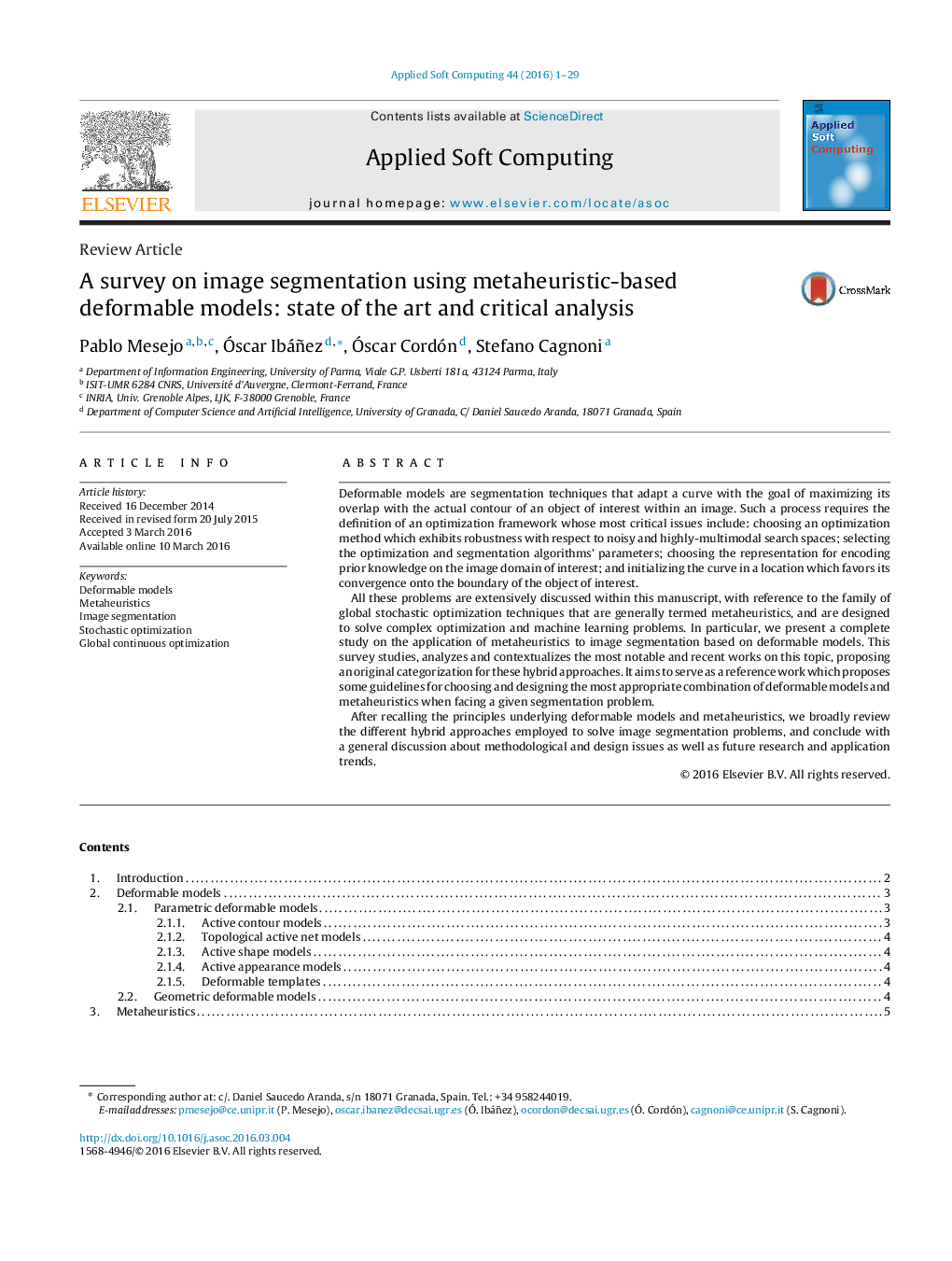| Article ID | Journal | Published Year | Pages | File Type |
|---|---|---|---|---|
| 494727 | Applied Soft Computing | 2016 | 29 Pages |
•Metaheuristics (MHs) are general-purpose stochastic optimization methods.•A Deformable Model (DM) tries to maximize its overlap with the object to segment.•This survey is the first review about the hybridization of DMs and MHs.•We provide guidelines to choose/design your hybrid segmentation approach.•This review paper studies, analyzes and contextualizes more than 120 papers.•MHs help in parameters selection, initial boundary location and DM contour evolution.
Deformable models are segmentation techniques that adapt a curve with the goal of maximizing its overlap with the actual contour of an object of interest within an image. Such a process requires the definition of an optimization framework whose most critical issues include: choosing an optimization method which exhibits robustness with respect to noisy and highly-multimodal search spaces; selecting the optimization and segmentation algorithms’ parameters; choosing the representation for encoding prior knowledge on the image domain of interest; and initializing the curve in a location which favors its convergence onto the boundary of the object of interest.All these problems are extensively discussed within this manuscript, with reference to the family of global stochastic optimization techniques that are generally termed metaheuristics, and are designed to solve complex optimization and machine learning problems. In particular, we present a complete study on the application of metaheuristics to image segmentation based on deformable models. This survey studies, analyzes and contextualizes the most notable and recent works on this topic, proposing an original categorization for these hybrid approaches. It aims to serve as a reference work which proposes some guidelines for choosing and designing the most appropriate combination of deformable models and metaheuristics when facing a given segmentation problem.After recalling the principles underlying deformable models and metaheuristics, we broadly review the different hybrid approaches employed to solve image segmentation problems, and conclude with a general discussion about methodological and design issues as well as future research and application trends.
Graphical abstractFigure optionsDownload full-size imageDownload as PowerPoint slide
